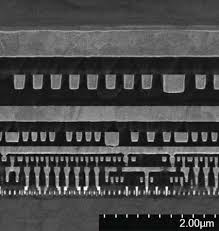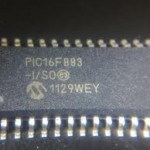Unlock Chip PIC18F8490 Firmware
Unlock Chip PIC18F8490 and extract the program and data out from its memory which include flash and eeprom, then copy the program and data to blank Microcontroller PIC18F8490.
For timing insensitive applications, the “RC” and “RCIO” device options offer additional cost savings.
The actual oscillator frequency is a function of several factors:
· Supply voltage
· Values of the external resistor (REXT) and capacitor (CEXT)
Given the same device, operating voltage and temperature and component values, there will also be unit-to-unit frequency variations. These are due to factors such as:
· Normal manufacturing variation
· Difference in lead frame capacitance between package types (especially for low CEXT values) Variations within the tolerance of limits of REXT and CEXT
In the RC Oscillator mode, the oscillator frequency divided by 4 is available on the OSC2 pin. This signal may be used for test purposes or to synchronize other logic. Figure 2-5 shows how the R/C combination is connected.
The PIC18F6390/6490/8390/8490 devices include an internal oscillator block, which generates two different clock signals; either can be used as the microcontroller’s clock source. This may eliminate the need for external oscillator circuits on the OSC1 and/or OSC2 pins
The main output (INTOSC) is an 8 MHz clock source, which can be used to directly drive the device clock. It also drives a postscaler, which can provide a range of clock frequencies from 31 kHz to 4 MHz. The INTOSC output is enabled when a clock frequency from 125 kHz to 8 MHz is selected.
The other clock source is the internal RC oscillator (INTRC), which provides a nominal 31 kHz output. INTRC is enabled if it is selected as the device clock source; it is also enabled automatically when any of the following are enabled:
The internal oscillator block is calibrated at the factory to produce an INTOSC output frequency of 8.0 MHz. The INTRC oscillator operates independently of the INTOSC source. Any changes in INTOSC across voltage and temperature are not necessarily reflected by changes in INTRC and vice versa.
The internal oscillator’s output has been calibrated at the factory, but can be adjusted in the user’s application. This is done by writing to the OSCTUNE register (Register 2-1). The tuning sensitivity is constant throughout the tuning range.
When the OSCTUNE register is modified, the INTOSC and INTRC frequencies will begin shifting to the new frequency. The INTRC clock will reach the new frequency within 8 clock cycles (approximately 8 * 32 ìs = 256 ìs). The INTOSC clock will stabilize within 1 ms. Code execution continues during this shift.
There is no indication that the shift has occurred. The OSCTUNE register also implements the INTSRC and PLLEN bits, which control certain features of the internal oscillator block. The INTSRC bit allows users to select which internal oscillator provides the clock source when the 31 kHz frequency option is selected.
This is covered in greater detail in Section 2.7.1 “Oscillator Control Register” before Unlock Chip.
An adjustment may be required when the AUSART begins to generate framing errors or receives data with errors while in Asynchronous mode. Framing errors indicate that the device clock frequency is too high. To adjust for this, decrement the value in OSTUNE to reduce the clock frequency. On the other hand, errors in data may suggest that the clock speed is too low. To compensate, increment OSTUNE to increase the clock frequency.
This technique compares device clock speed to some reference clock. Two timers may be used; one timer is clocked by the peripheral clock, while the other is clocked by a fixed reference source, such as the Timer1 oscillator.
Both timers are cleared, but the timer clocked by the reference generates interrupts. When an interrupt occurs, the internally clocked timer is read and both timers are cleared. If the internally clocked timer value is greater than expected, then the internal oscillator block is running too fast.
Tags: unlock chip source archive,unlock chip source code,unlock chip source content,unlock chip source data,unlock chip source eeprom,unlock chip source file,unlock chip source firmware,unlock chip source information,unlock chip source memory,unlock chip source program



